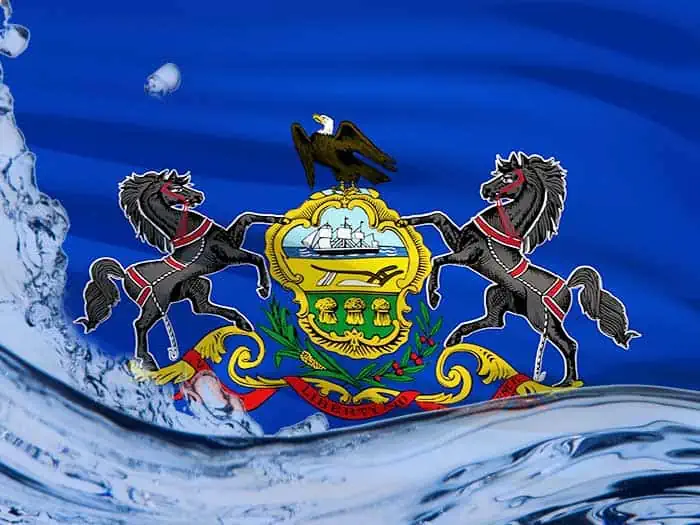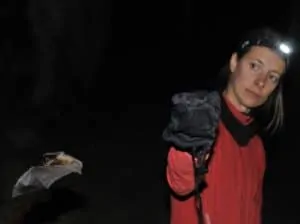


The Pennsylvania Department of Environmental Protection (PADEP) has launched a pilot program to speed up the issuance of National Pollutant Discharge Elimination System (NPDES) permits, focusing on construction stormwater discharges. Started on April 29, 2024, this pilot in 10 counties is designed to streamline the application process for land development projects over one acre that faces unique environmental challenges. Eligible counties include Allegheny, Beaver, Bucks, Chester, Lebanon, Lehigh, Luzerne, Monroe, Montgomery, and York.
From May 1, 2024, the pilot will process up to three NPDES applications per quarter per county, with a yearly maximum of twelve. Applications must involve a licensed professional to oversee the stormwater plan. A significant improvement over traditional methods, the pilot combines completeness and technical reviews within 47 business days. If deficiencies are found, applicants have 22 business days to resolve them, hastening the move to a draft permit stage and public notice.
Exclusions apply to permit renewals, amendments, and projects on brownfield sites or those with large land disturbances or previous enforcement actions. The pilot also mandates two pre-application meetings to ensure eligibility and a final submission within 22 business days after these meetings.
However, the pilot program excludes several types of applications, such as those for permit renewals, amendments, transfers, projects exempt from application fees, or those proposing unapproved stormwater control measures. It also excludes projects requiring special reviews, those disturbing large land areas, or those associated with past enforcement actions. Notably, projects on brownfield sites must complete all required environmental studies and obtain necessary approvals before applying.
The Bureau of Clean Water manages the statewide Erosion and Sediment Control (E&S) program, as specified under 25 Pa. Code Chapter 102, which mandates an E&S permit for certain activities causing significant earth disturbances:
Managed by the Bureau of Clean Water, the pilot seeks to cut application processing times significantly. Additional details and application procedures are available on PADEP’s website.
A draft of the PAG-02 General Permit that would become effective on December 8, 2024, has been posted to DEP’s eLibrary.
Additional Information:
USEPA – Region 7 has been working on a mobile air emissions inventory (dubbed Gmap) to identify major immediate health concerns in the St. Louis area. On Oct 25, they also held two community meetings in the Lemp neighborhood to provide a status update on air monitoring efforts. So – if you don’t have your facility properly permitted and in compliance with construction or operational air emissions, you’re in for increased scrutiny from the agency and the public alike. The USEPA officials we work with stress that accuracy and timeliness in submitting your permit and responsiveness to agency questions are the keys to successful and relatively painless permitting, which many environmental consultants can assist with.
Another issue related to air permitting is keeping on top of the changing landscape of the National Ambient Air Quality Standards (NAAQS). East St. Louis and St. Louis, as well as St. Charles and Jefferson Counties, are currently mapped as non-attainment zones for ozone. Proposed reductions in the allowable limits for particulate matter (PM) 2.5 micrograms per cubic meter (µg/m³) under the Clean Air Act, which could go into effect at any time, will result in the designation of additional non-attainment areas in the region and, accordingly, far greater difficulty in air permitting for new or expanding facilities. The current annual average primary standard for PM 2.5 is 12 µg/m³, whereas the proposed standard will likely fall to between 9-10 µg/m³. It’s also important to know that EPA recently announced $3.5 million for Environmental Justice projects across Missouri and that EJ is becoming a bigger and bigger challenge for industrial facilities housed in EJ communities, so if your facility is an air emitter, even if properly permitted, you could face operational and PR challenges.
Another important thing to be proactive about is National Pollutant Discharge Elimination System (NPDES) permits for construction and wastewater or stormwater runoff. NPDES non-compliance is becoming a major concern for MDNR and EPA as Missouri has a higher non-compliance rate than many other states. And ditto for spill prevention, control, and countermeasure (SPCC) and stormwater pollution prevention plans (SWPPP). Facility compliance audits are a great tool to ensure you have everything in place so you don’t end up with unexpected notices of violation.
Finally, as hopefully many of you are aware, due diligence and permitting requirements will become increasingly strict as polyfluorinated substances (PFAS) are declared hazardous substances under CERCLA. There is likely to be a great deal of litigation over this. PFAS have already been added to other regulatory frameworks, such as the recent requirement for toxic release inventory reporting to include them as chemicals of special concern, removing the de minimis exemption formerly in place.
Successful industrial facilities I work with are proactive in their permitting and compliance efforts. They carve out ample time for due diligence and – if needed – remediation work before facility acquisitions and expansions. My advice is to know what you’re getting into and that front-end costs are nothing compared to fines or cleanup costs you might be subject to if you don’t get your ducks in a row. For example, the USEPA recently issued a sizeable fine related to a Clean Water Act violation for a scrap metal recycling facility in St. Louis alleged to have illegal discharges into the Mississippi River.


On December 24, 2022, the Pennsylvania Department of Environmental Protection (PADEP) published the renewed NPDES General Permit for Discharges of Stormwater Associated with Industrial Activity (PAG-03). This permit covers stormwater discharges from industrial facilities such as manufacturing facilities, landfills, scrap yards, and bus terminals.
The new permit term will cover operations from March 24, 2023 (effective date) to March 23, 2028 (expiration date). If PADEP receives an NOI by March 23, 2023, an existing PAG-03 permittee can continue to discharge under the reissued PAG-03. The application forms and instructions are available from the PADEP eLibrary.
Beginning in 2024, the due date of the Annual Report and NOI fee annual installment payment will be by March 23 each year. For existing permittees, the due date for the NOI fee installment in 2023 and the annual report covering 2022 will be May 1, 2023.
Analytical requirements for monitoring stormwater discharges are established in an appendix to the General Permit for each industrial sector. A monitoring requirement for Total Nitrogen and Total Phosphorous was added to each Appendix. Other changes made are to monitoring and Benchmark Value parameters for individual sectors. Target Quantitation Limits (TQLs) are established for analytical parameters, and permittees must use labs that can meet the TQLs to comply.
The new permit increases response levels for continual exceedances of Benchmark Values, concentrations of pollutants that serve as a threshold for evaluating whether site Best Management Practices effectively control stormwater pollution. Two or more consecutive monitoring period exceedances of Benchmark Values trigger the requirement to develop and submit a corrective action plan, implement additional controls, or apply for an individual permit if notified by PADEP.
Monitoring under the renewed permit commences with the July 1 – December 31, 2023 monitoring period. Until July 1, 2023, permittees should continue monitoring for parameters in their existing General Permit.
These are not the only changes made to the General Permit. Please contact for updates in other states or commonwealths and Denise Wessels at (610) 382-3050 if you need help preparing the NOI to reapply for the permit or to maintain compliance with permit terms in Pennsylvania.
On December 5, 2022, the EPA released a memo providing direction under the NPDES permitting program to empower states to address known or suspected discharges of per- and polyfluoroalkyl substances (PFAS). Note that the list of Applicable Industrial Direct Discharges (page 2, paragraph A.1) includes landfills. The memo cites state programs in Michigan and North Carolina that other states may want to replicate. These approaches and others could help reduce PFAS discharges by working with industries, and the monitoring information they collect, to develop facility-specific, technology-based effluent limits.
As stated in its memo, the EPA’s goal is to align wastewater and stormwater NPDES permits and pretreatment program implementation activities with the goals in EPA’s PFAS Strategic Roadmap. The memo recommends that states use the most current sampling and analysis methods in their NPDES programs to identify known or suspected sources of PFAS and to take actions using their pretreatment and permitting authorities, such as imposing technology-based limits on sources of PFAS discharges.
The Agency hopes to obtain comprehensive information by monitoring the sources and quantities of PFAS discharges, informing other EPA efforts to address PFAS. The EPA will need this information since new technologies and treatments are in development but remain unproven to work successfully in specific industries.
Other proposed actions by the Agency include designating two PFAS as Comprehensive Environmental Response, Compensation, and Liability Act (CERCLA) hazardous substances and an order under EPA’s National PFAS Testing Strategy requiring companies to conduct PFAS testing and nationwide sampling for 29 PFAS in drinking water starting in 2023.
In a letter to Congress, SWANA and NWRA associations request that regulation under CERCLA for addressing PFAS contamination assign environmental cleanup liability to the industries that created the pollution in the first place. Both associations note that landfills and solid waste management, an essential public service, do not manufacture nor use PFAS. Therefore, the general public should not be burdened with CERCLA liability and costs associated with mitigating PFAS from groundwater, stormwater, and wastewater.
Resources:
The new Exceedance Response Action (ERA) paradigm has wide-reaching implications for future NPDES permittees of industrial stormwater discharges. This growing regulatory compliance mechanism is already being implemented in California, Washington, and most recently in Oregon. These states are viewed as precursors of future trends throughout the United States, as several key components of the forthcoming Multi-Sector General Permit (MSGP) will influence other states to move toward similar ERA response scenarios and regulations.
Join Forester University for this live, educational, two-part webinar as speaker Jonathan Meronek, QISP ToR, CPESC, QSDP/D, of SCS Engineers discusses the future of the tiered ERA paradigm and why stormwater managers and facility compliance personnel have only begun to come to terms with it. He will help you better understand if your site is covered and how an Industrial Permittee can come into compliance.
The webinar will examine past lessons, including the implementation of effective best management practices, water quality characterizations, and successful compliance strategies. It will also project what the compliance paradigm will look like during the first years of an industrial General NPDES Permit.
Attendees can expect to learn to:
Attendees can expect to earn credits: 2 PDH / 0.2 CEU
Sensitive natural resources include but are not limited to the following: Threatened and Endangered (T&E) species and their habitats, wildlife refuges, wetlands, and tribal burial grounds. These are areas where federal or states have identified protected resources. SCS Engineers has the expertise and credentials to perform surveys for clients with projects requiring the identification of these sensitive resources, along with the regulatory permitting with specialization in threatened and endangered species, wetlands, and critical habitats.

Development and construction often occur near or within areas identified as sensitive natural resources. Responsible developers identify sensitive resources near or within their proposed project area as part of their development plans because protecting our nation’s natural resources is important. The protection of sensitive natural resources is the basis of the Federal Endangered Species Act, Clean Water Act, and National Historical Preservation Act. Projects under consideration in sensitive areas require special permits; without which projects can be shut down causing costly contractor delays and schedule disruptions. Post-permitting and the associated fines can be severe, so even if you are not a conservationist, it makes good sense to complete the permitting process before breaking ground.

When considering a project in potentially sensitive ecological areas, SCS Engineers recommends a constraint analysis be performed. The analysis will determine if the proposed project location is within wetlands, critical habitat, threatened and endangered species range, and other potential constraints. If it is, SCS recommends that a site assessment is performed and initiate agency consultation to protect the sensitive resources.
Both the permitting process and the preliminary ecological assessments are not difficult but do require credentialed specialists. SCS has geologists, hydrologist, hydro-geologists, and environmental compliance professionals nationwide. SCS Engineers even has credentialed biologists for specialized threatened and endangered species monitoring and assessments for several species that include but not limited to the American Bury Beetle, Arkansas Shiner, Arkansas Darter, Topeka Shiner, Neosho Mucket Mussel, Rabbitfoot Mussel, Northern Longear Bat, and Indiana Bat in the Central U.S.
To determine if a project is within a sensitive natural resource area or to schedule an ecological consultation, contact .
About the Author: Vaughn Weaver

In addition, he has 15 years of water quality experience with National Pollution Discharge and Emissions Systems (NPDES) for point source and non-point source permits. Vaughn is also a Certified Wetland Delineator – USACOE.
The Industrial General Permit is an NPDES permit that regulates discharges of stormwater associated with industrial activity. Based on the projected revenue and the predicted surplus, SWRCB is working to refine program funding and plans to adjust the current IGP permit fee structure.
Glen Osterhage, Fee Branch Manager for the California State Water Resources Control Board (SWRCB), Division of Administrative Services, met with industry leaders on November 3, 2015, to discuss potential changes to the stormwater Industrial General Permit (IGP) fee structure. Meeting attendees included: SCS Engineers, the Industrial Environmental Association (IEA), California Stormwater Quality Association (CASQA), the California Taxpayers Association (CTA), California Chamber of Commerce, the Independent Energy Producers Association (IEPA), and the host – California Manufacturing and Technology Association (CMTA).
The SWRCB funds eight core permit programs through the Waste Discharge Permit Fund, which pays for over 800 staff. California has cut allocations for agency staff funding by approximately $30 million dollars, forcing SWRBC to distribute its cost burden across the permit fee base. Currently, IGP permit fee revenue is $14.4 million (a single permit fee of $1,791 multiplied by approximately 8,035 permittees). However, SWRCB projects higher revenues due to increased enrollment when all newly required permittees file. Core programs are also subsidized with excess funds coming from the Construction Permit fees (excess of $2M over required $2M last year). Based on the current projected revenue and the predicted surplus the SWRCB is working to refine the IGP program funding and plans to adjust the structure of the permit fee from a flat rate to a rate adjusted for facility size, project complexity, and the threat to water quality.
Following the 2017 to 2018 year permit periods, the SWRCB will have better estimates with which they can accurately adjust fees. The SWRCB is exploring the potential for providing fee discounts for benefits or subsidizing other permit compliance cost burdens. For now, the No Exposure Certification (NEC) IGP Permits are likely to remain a flat fee, but their value may change following additional baseline permit data results.
The SWRCB’s revenue goal is, as always, to break-even; any proposed change to the fee structure is not intended to boost agency revenue over expenses. Another goal is to have data readily available for selecting a permit fee tier from the information submitted on the IGP’s online database application (Storm Water Multiple Application & Report Tracking System, SMARTS, smarts.waterboards.ca.gov).
The SWRCB will have additional meetings to collect comments on the proposed change in hopes of creating a consensus with permittees on these impending changes.
SCS Engineers will provide information as it becomes available. Our professionals are available to assist newly required permittees with filing and compliance requirements.
Contact SCS’s Stormwater Manager, Cory Jones at 1-858-571-5500 or .
Stormwater Management Services